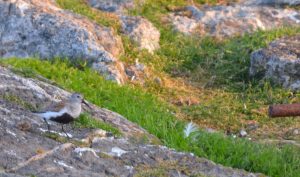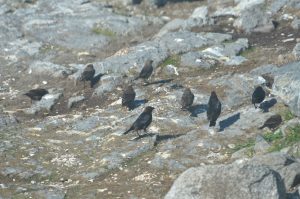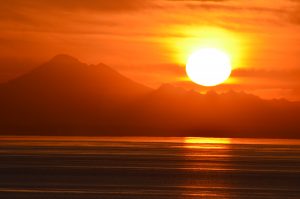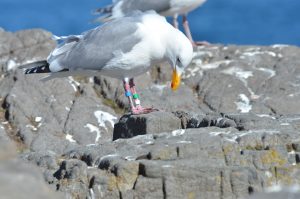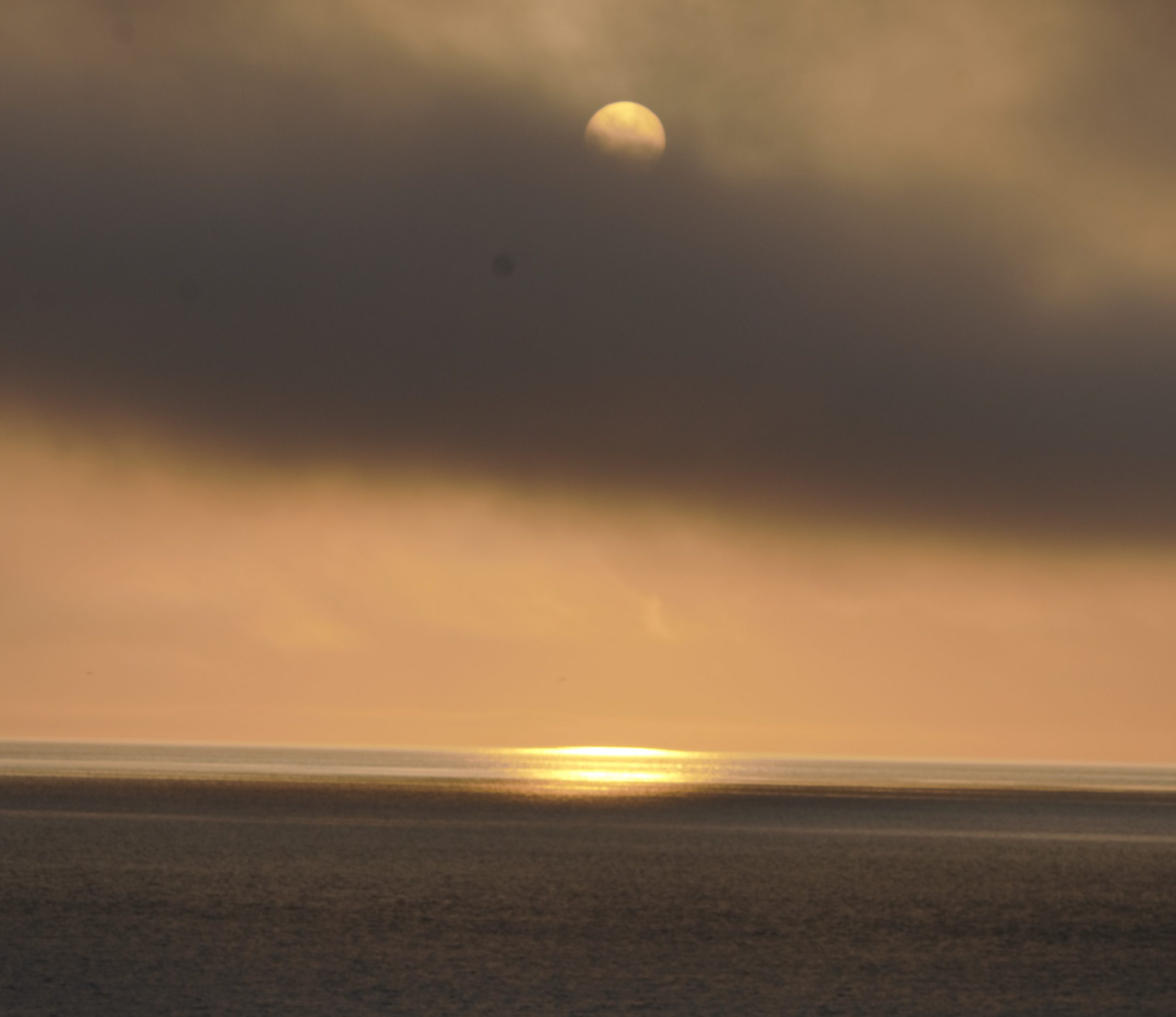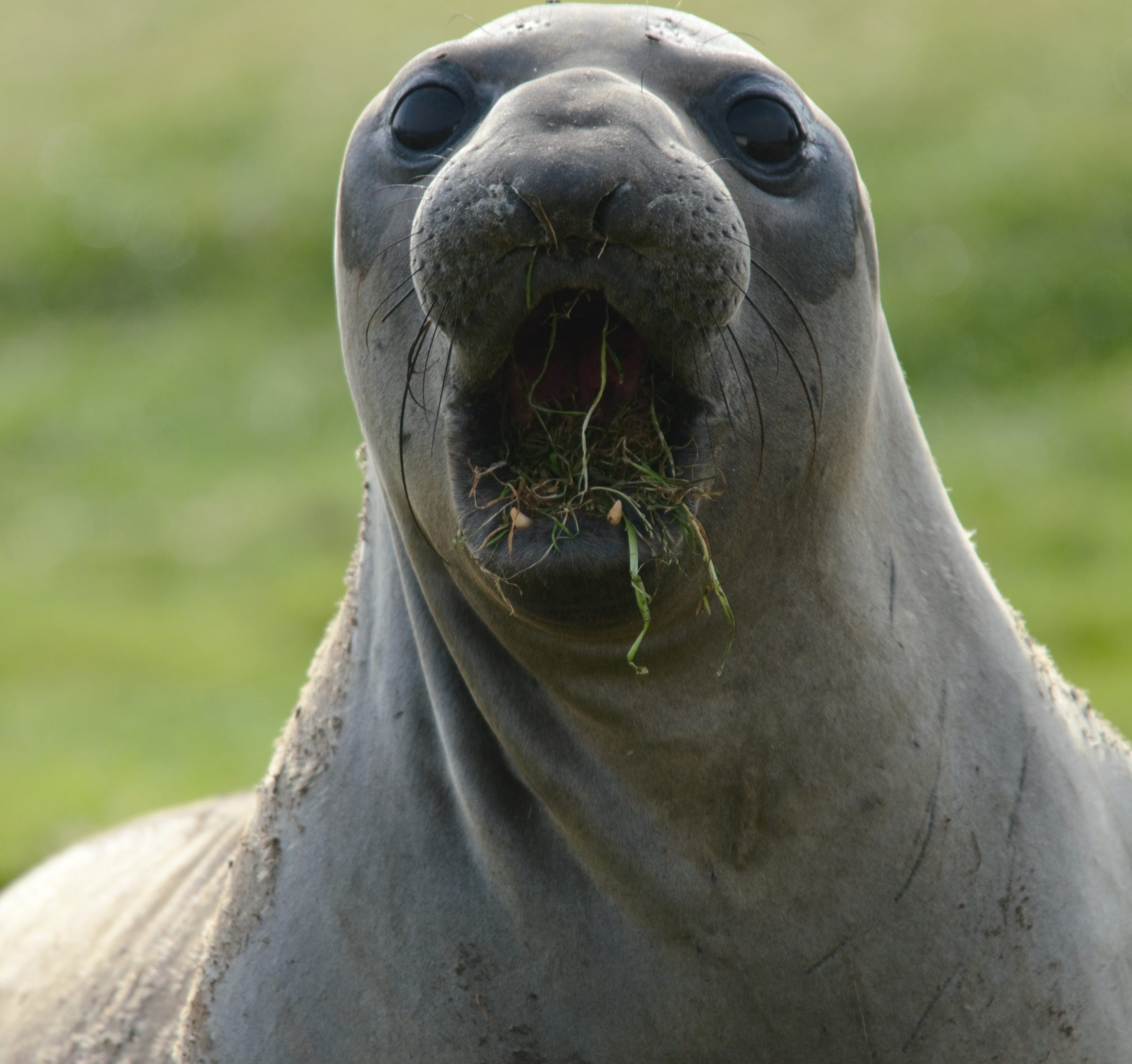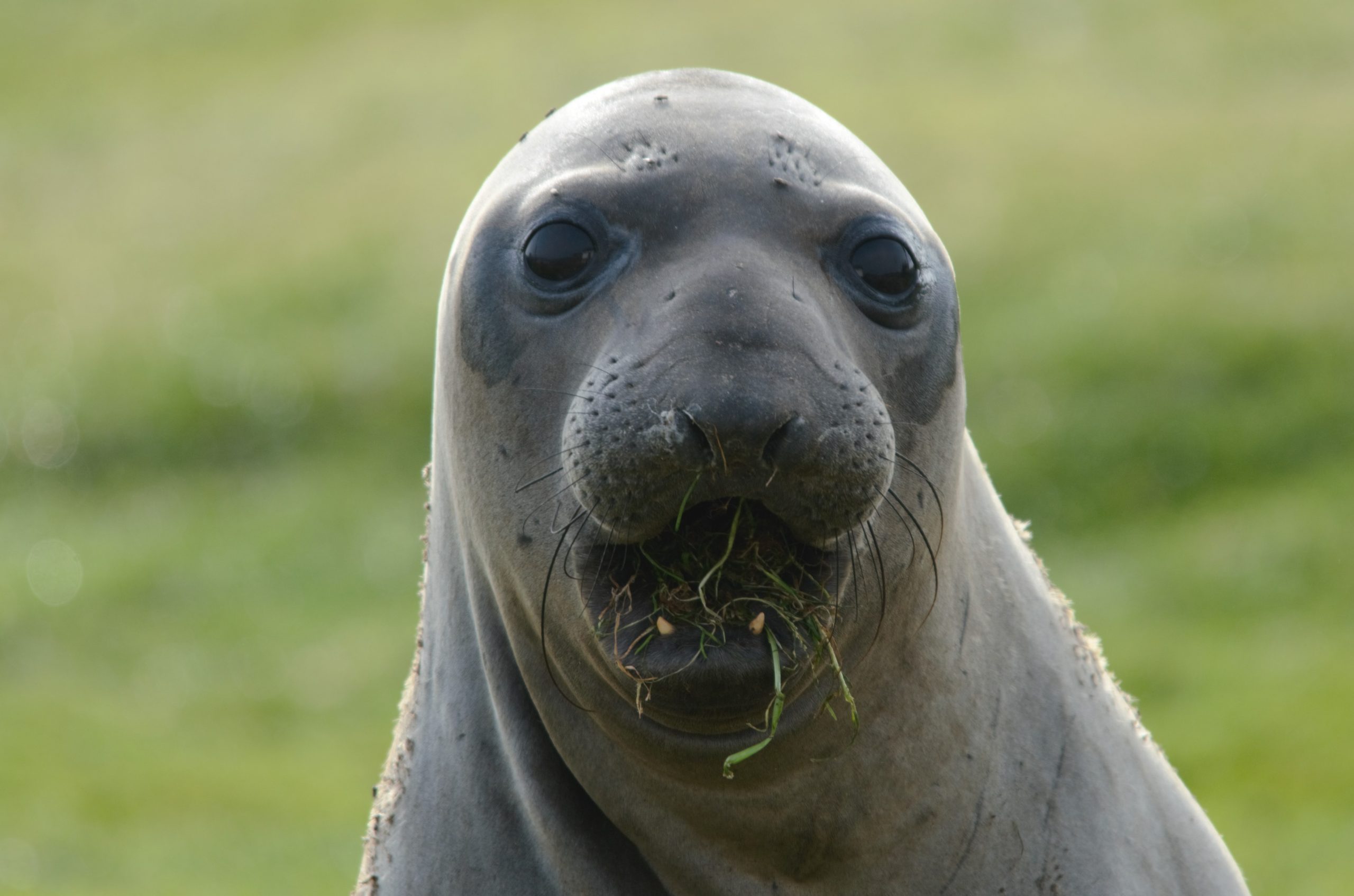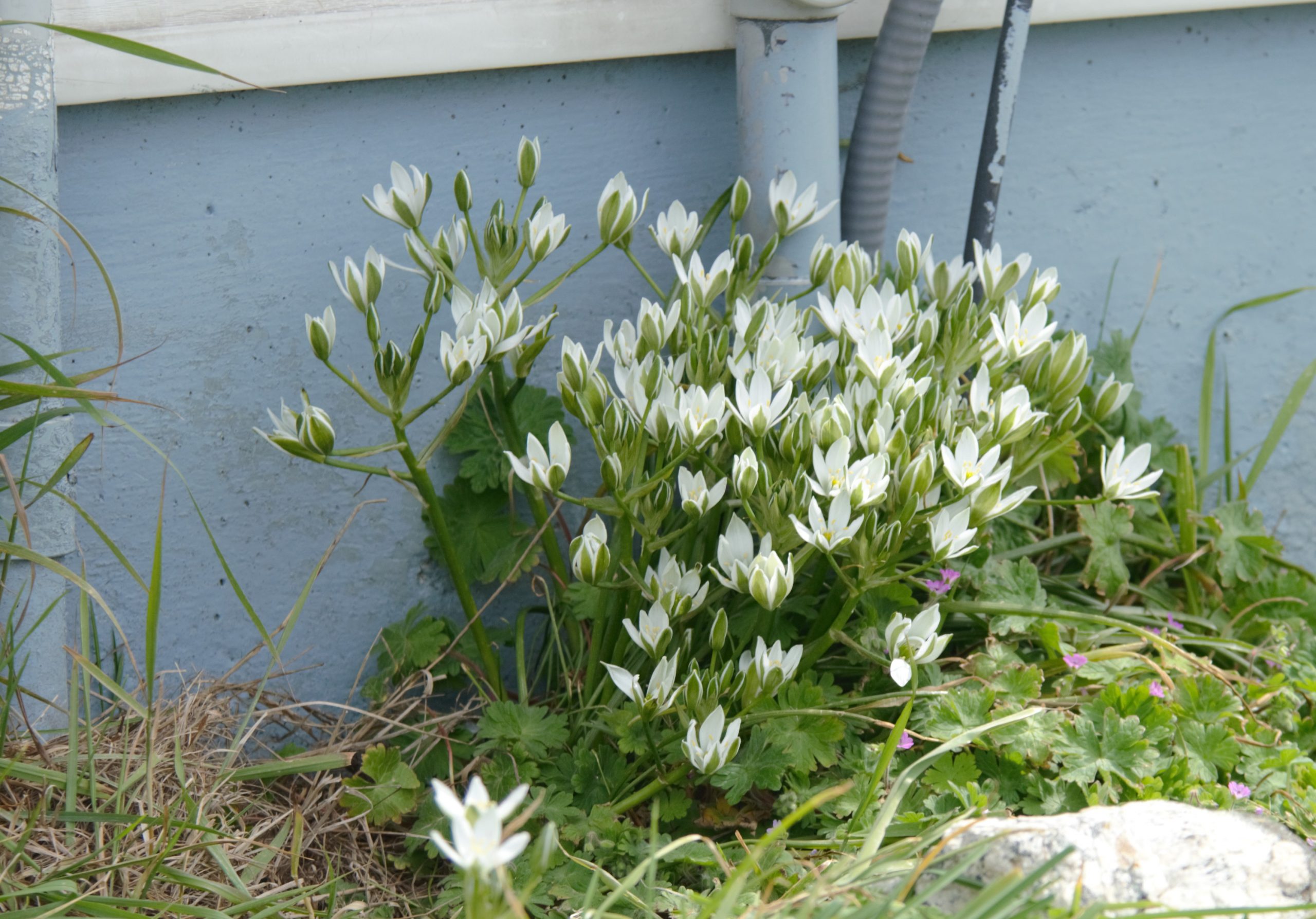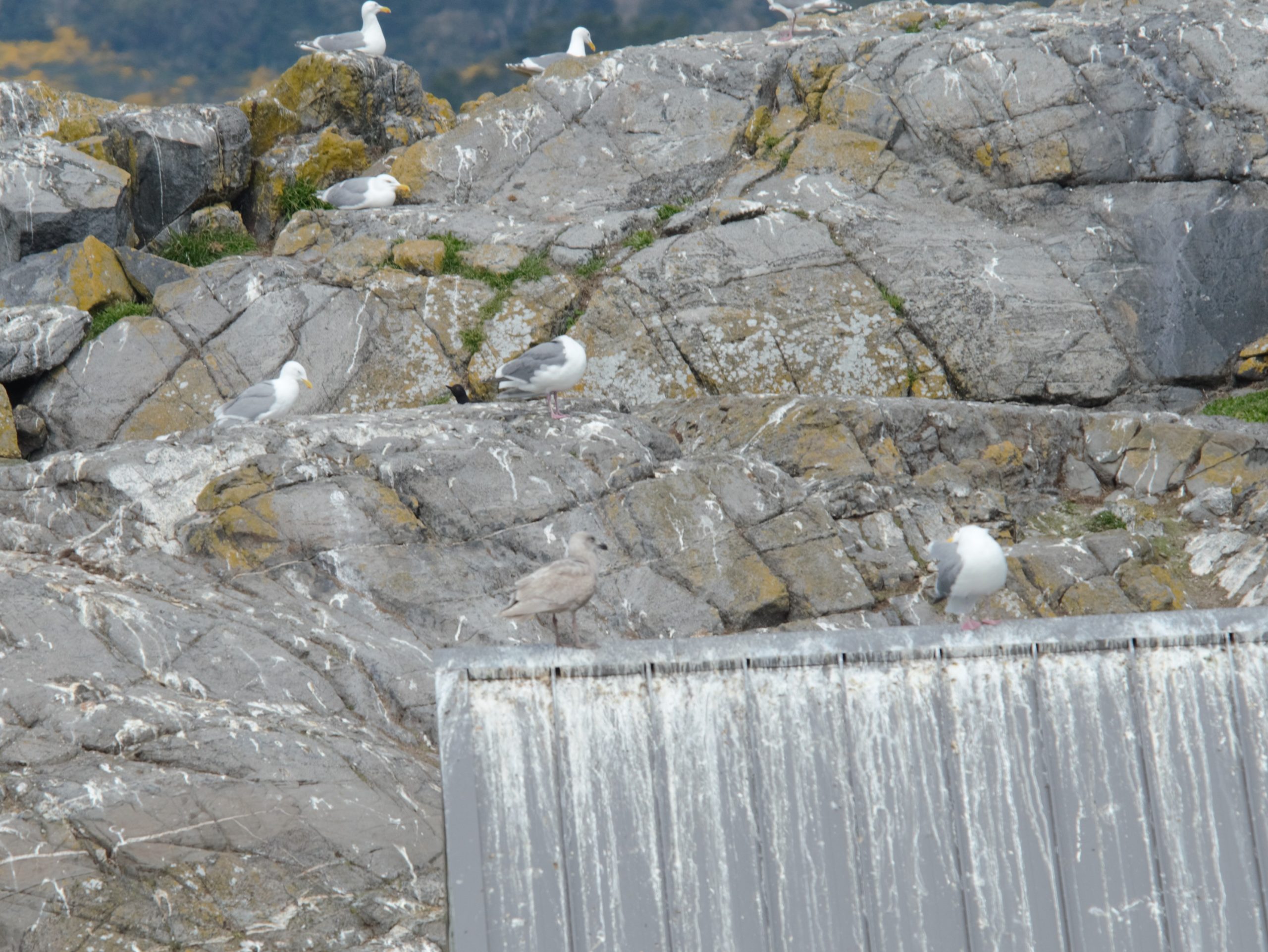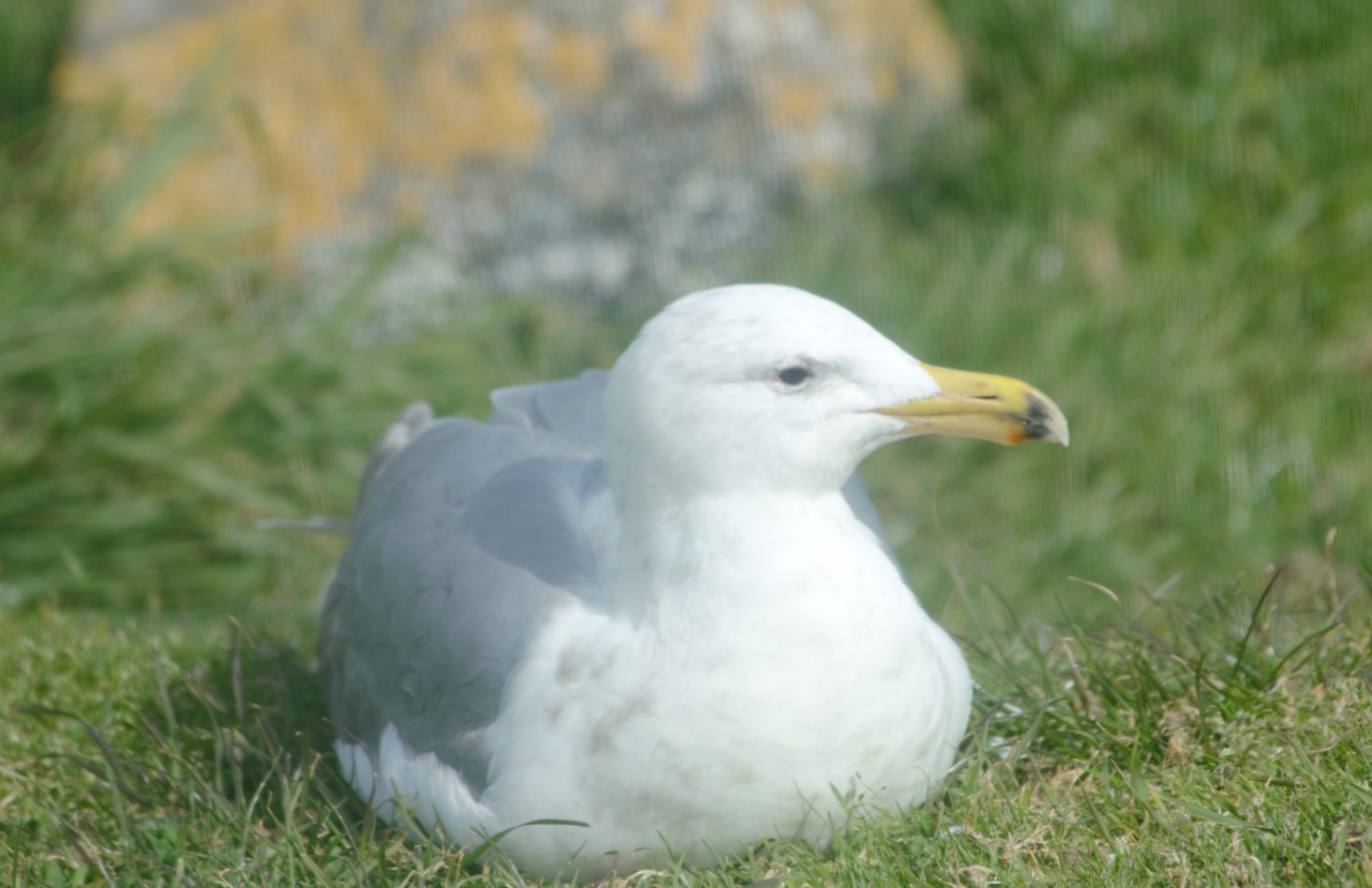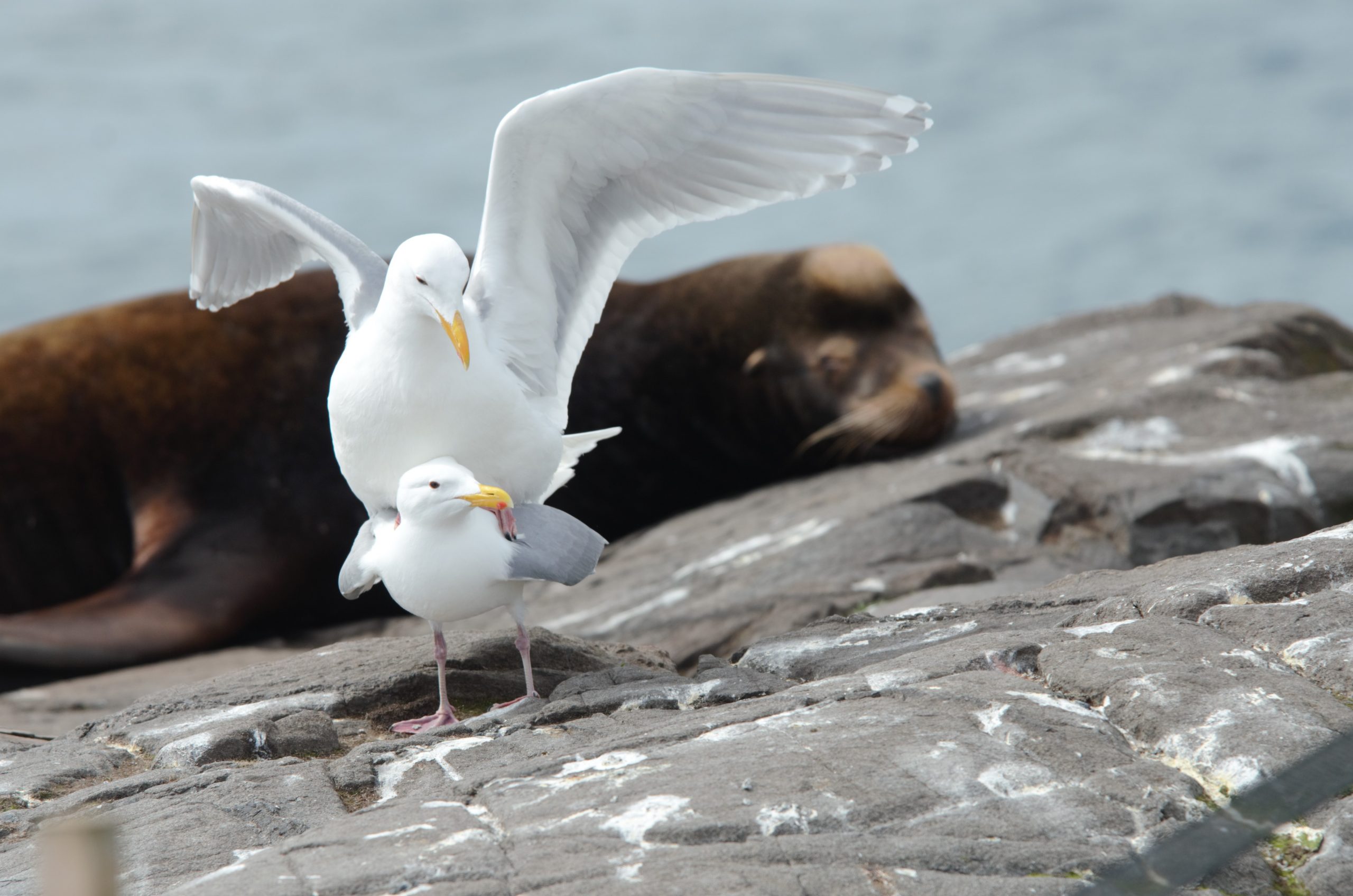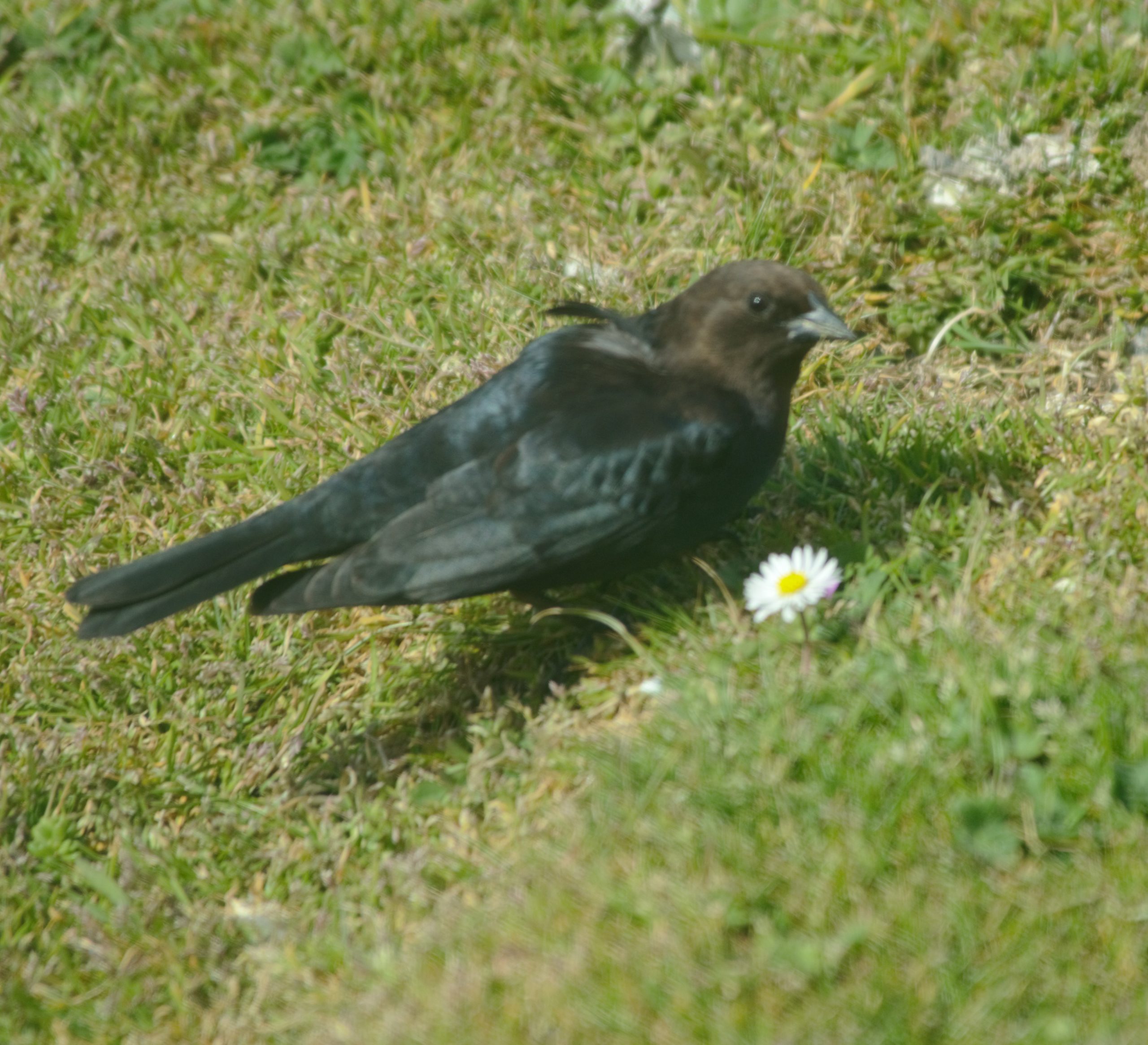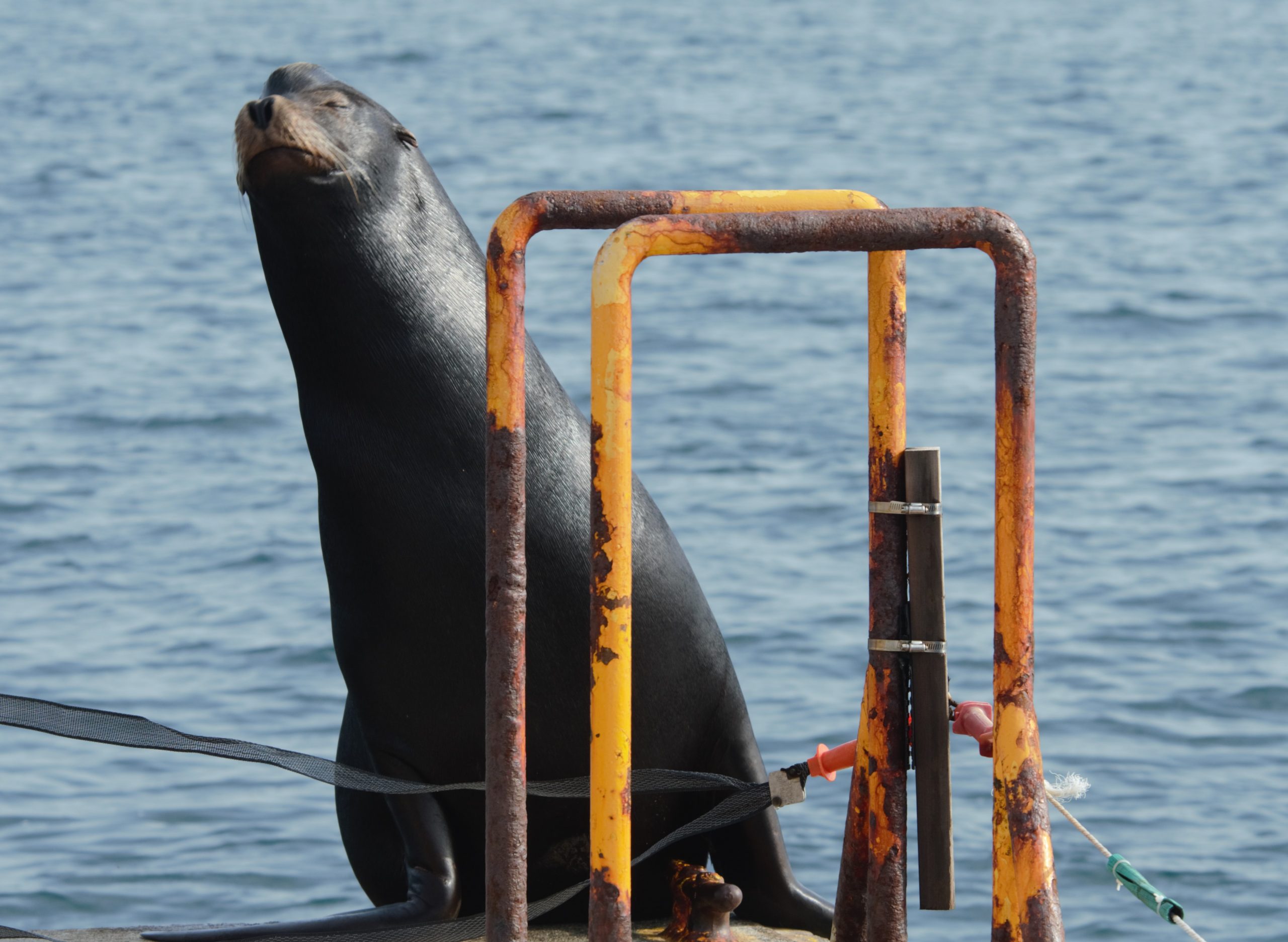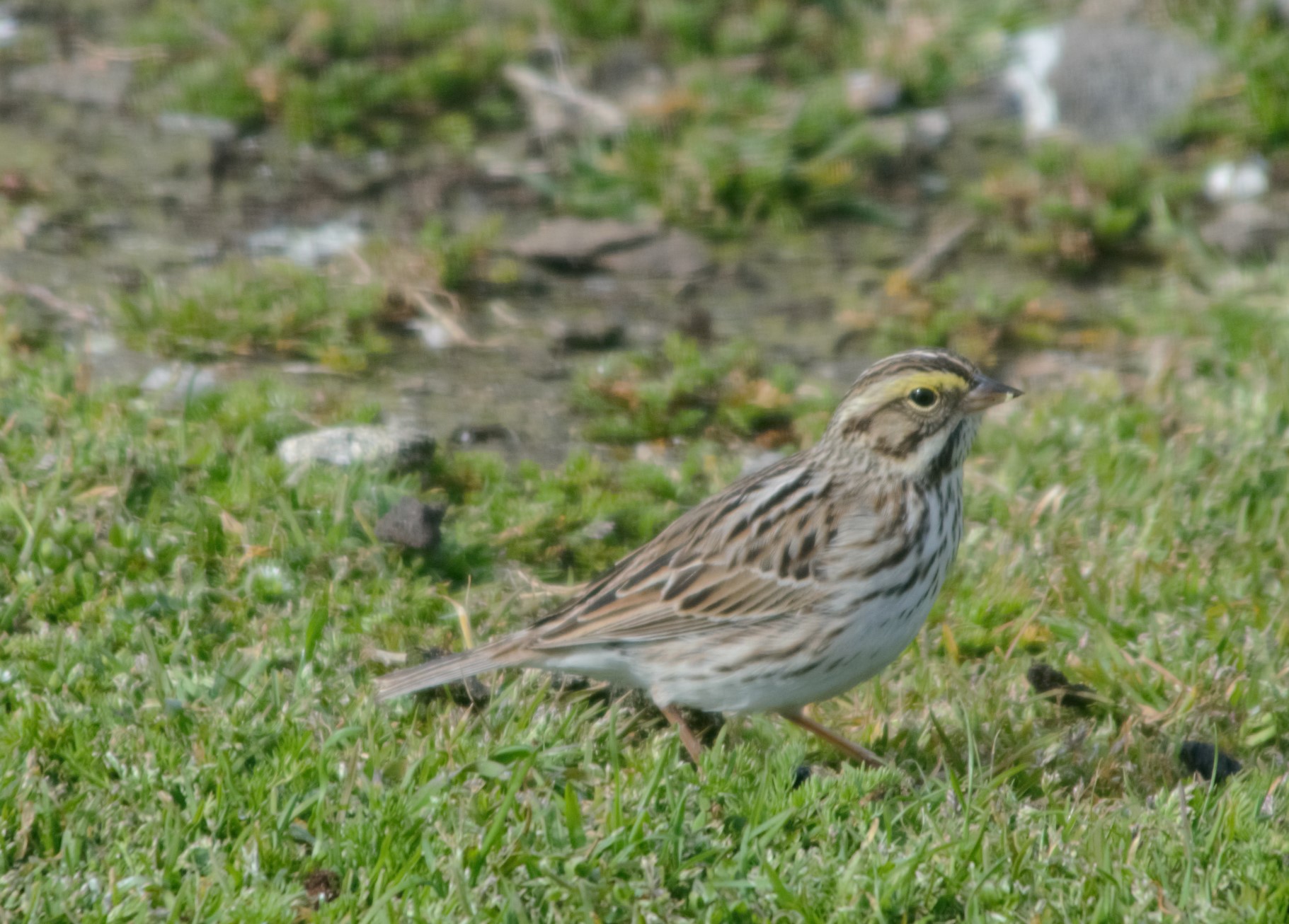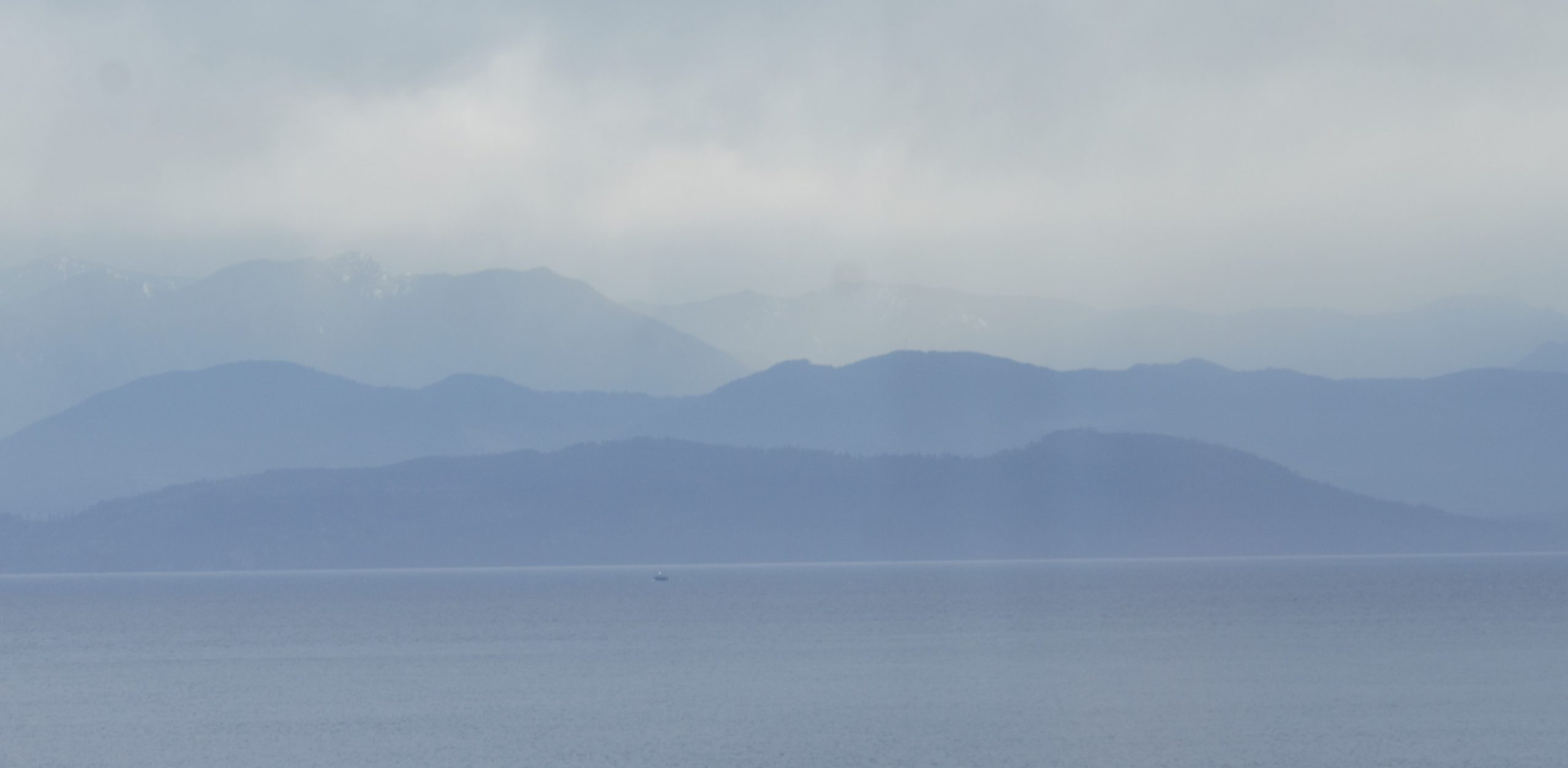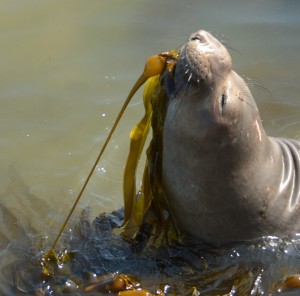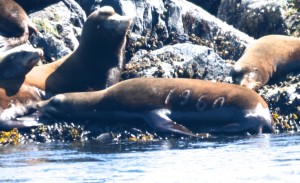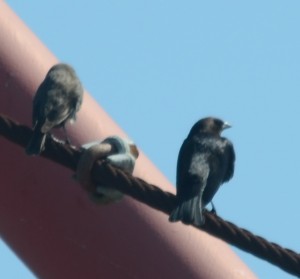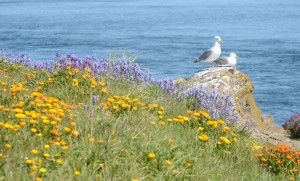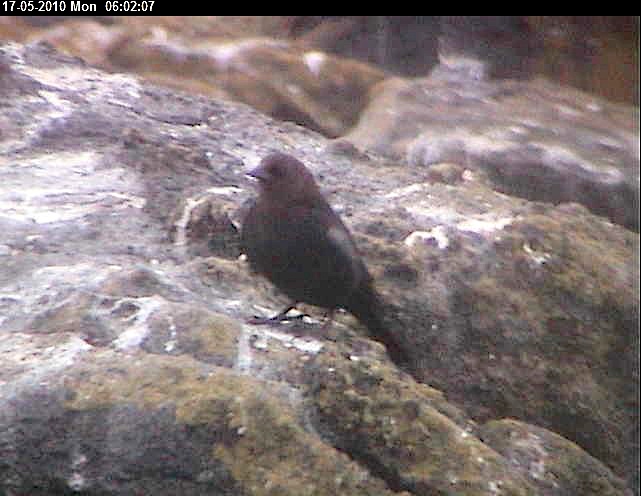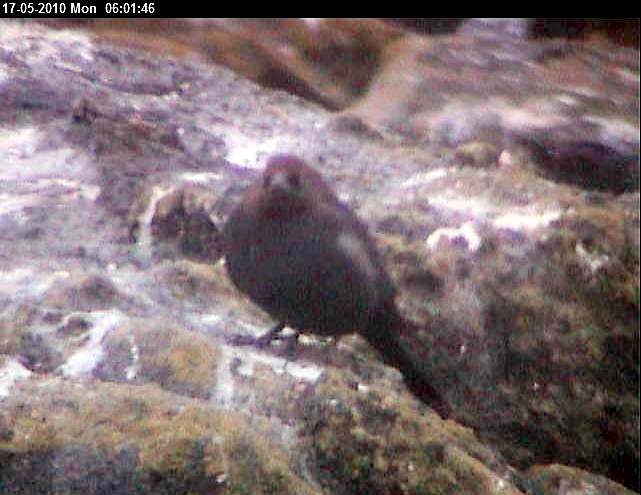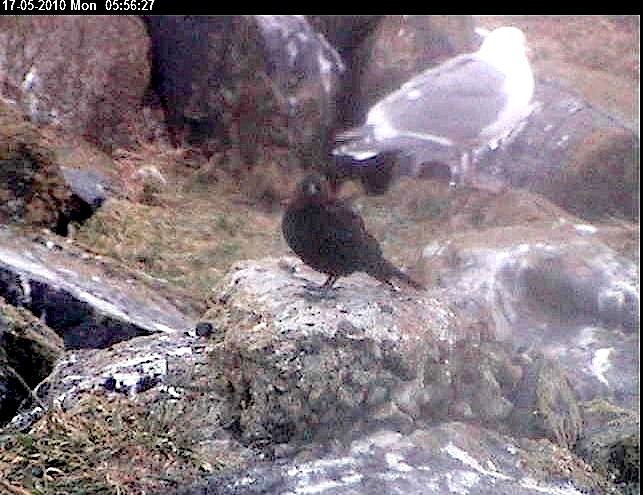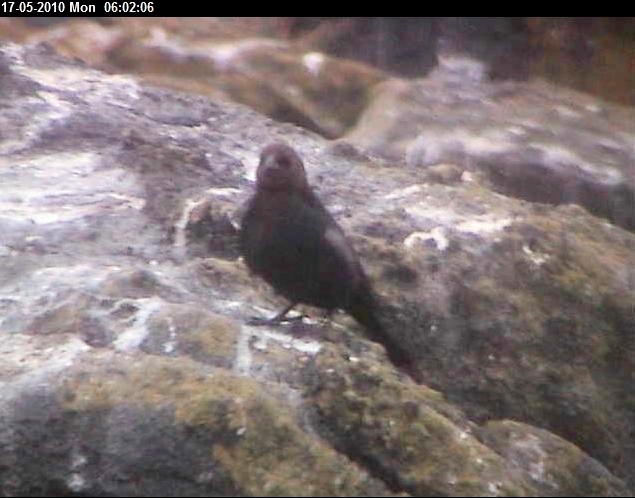I am here for four days to give Jillian Brown a chance to attend to her family. It is a special time for me because it is my birthday and the fourth time that I have been here on April 30 but only my second time in the capacity of eco-guardian. This is my third day here and I have updated the SOP to include the up to date log sign in details (Thank you Garry).
The weather is currently 15 knots west but over the past day has been as high as 30 knots, SW and NW. The sky was clear for 2 days and there was enough energy provided from the solar panels to take care of electrical needs.
Below is a picture of a tagged glaucous wing gull that I saw the May 22,2022 (see log entry that date) in the exact same place. Although this may not surprise you it made me feel like the animals here are familiar. It does seem like the geese nesting by the fuel shed are the same aggressive geese as last year and the ones under the keeper’s house stairs the same mellower geese but I just never had proof. This gave me a feeling of community.
There are 6 elephant seals here, females and immatures, including the tagged yearling. I haven’t seen this year’s pup for 24 hours so perhaps all the newborns are now gone.
Visitors
Yesterday (April 29) I was surprised when 6 kayaks pulled up the jetty. They were from Pearson College and had been given permission to land. Of course the sea lions stampeded on their arrival. Luckily not many kayakers do come this way as the sea lions usually get right in the water even though motor boats come much closer without scaring them. Perhaps they should turn some music on LOUD as they approach?
There were only 2 or 3 ecotourism boats over Friday and Saturday but today there have been 8 in every size, perhaps tied to the massive cruise ship recently docked in Victoria?
Maintenance:
- I am working on the wood pile, chopping and stacking in the house.
- Swept the lamp room and continued sweeping the light house stairs.
- Filled the batteries with distilled water.
- This is month end so sent the salinity and temp chart to Sebastien Donnet.
- Also have almost completed the month end report but need to review a few details with Greg.
- Sent the info of tagged bird info to appropriate source.
- Dunlin
- cowbirds
- Sunset over the Olympics
- Banded Glaucous-winged Gull

